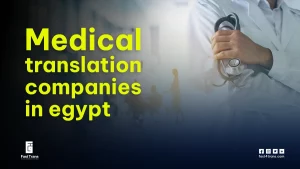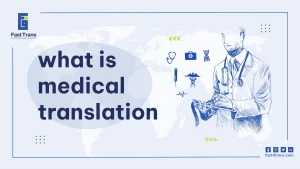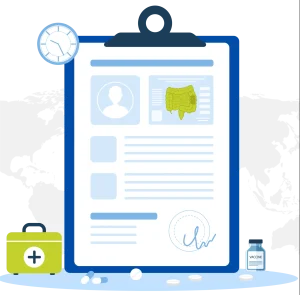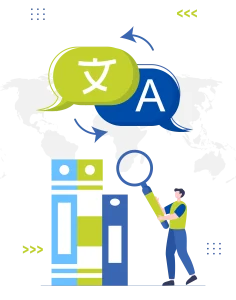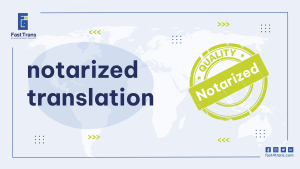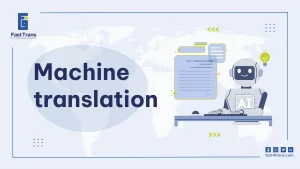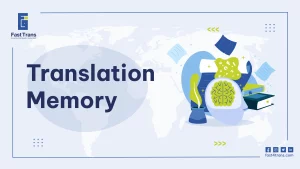Arabic translation rates vary widely, influenced by factors like pricing methods (per word, hour, or page), language complexity, and project specifics. Rates per word, the most common, range from $0.05 to $0.50 in the U.S., while per-hour costs span $15 to $150 for tasks like transcreation.
Unique challenges, including Arabic’s complex grammar and diverse dialects, make it pricier than many languages, especially outside native regions. Machine translation offers a budget-friendly alternative, though it lacks human precision. Factors like content type, deadlines, and location further shape costs, making Arabic translation a dynamic and tailored service.
How are Arabic translation rates calculated?
There are several ways in which the cost or rate of a Arabic translation project big or small can be calculated, depending on varying methods and factors that translation agencies or individual translators consider in mind.
The Arabic translation rates can be determined through any of the below methods:
- per word rate
- rate per line
- per page rate
- rate per hour
- flat fee
- Rate per project
- customized price.
Let’s tackle the most used ones: rate per word, rate per hour, and rate per page.
What is the Arabic translation price per word?
Rates per word are considered the standard for calculating translation costs. They are easy to calculate and pretty straightforward.
Although what’s decisive is the word count, the cost might increase or decrease depending on other factors
For example, if the translation has a tight deadline, or if the content in need of translation is highly specialized and can be time-consuming.
In the United States, the cost per word translation ranges from $0.05 to $0.50
What is the Arabic translation rates per Hour?
Translators could be charged as little as $15, and all the way up to $150 per hour for their translation services.
A slightly different way to set translation pricing is to calculate the average time the project needs. It is oriented towards the effort on the part of the translator.
Moreover, if the client needs the translation to be delivered ASAP, this puts the translator on a tight deadline and therefore will increase the pricing.
Unlike the per-word rate, the per-hour rate is not considered the standard. However, it is sometimes optimal for some translation types like ‘transcreation’ or legal translation.
What is the per page Arabic translation rates?
The average translation rate per page in the US is $20 – $130, depending on the subject, and language pair difficulty.
While per-page pricing is less common, it can be used in instances when the word count can not be determined, like scanned PDF documents, and legal documents like sworn translations.
It is also used when the document has a layout that includes tables or graphs.
In addition to format, the rate per page varies depending on factors like the language pair, the subject matter, and turnaround time.
The rates mentioned above are based on the average ones reported by the top translation resources in the United States right now.
Languages That Cost More to Translate
What determines costly language translations is a set of factors.
In the United States for example. Translation to and from Arabic is considered one of the top difficult ones that cost more than other languages.
Logically, this is not the case when translating Arabic in Egypt where it is the native language. In this case, one factor for pricing is the location of where you get the translation service.
Other factors are concerned with the difficulty of the language, like its complex grammatical structure, syntax, lack of equivalents, use of idioms, different character sets…etc.
Among 7,100 different languages in the world, Mandarin Chinese, Thai, Hungarian, Korean, Japanese, and Arabic are considered the most expensive languages for translation.
Mandarin Chinese
Mandarin has thousands of characters (50,000-80,000) that need to be studied, compared to only 26 characters in English.
Mandarin has complex grammatical rules that are very different from Western languages. It’s rich in homophones and idioms, and many of the most famous mistranslations worldwide come from Mandarin translations.
read more How Do You Create a Translation Services RFP
Thai
Thai is a tone language. You can pronounce Thai words in five different ways and, like Chinese, the meaning changes depending on their pronunciation.
It has such a unique syntax that distinguishes it from other languages. There is no space between words or full stops between sentences.
Hungarian
Hungarian is known for its difficult and complex grammar.
It’s flooded with idioms, which requires translators to be culturally adept enough to localize them.
Korean
Korean has a unique grammatical structure. different levels of formality and politeness. The demand for Korean translation has increased over the past few decades, while the number of Korean translators is smaller than the demand.
Japanese
Japanese has four different writing systems and a hierarchy of levels of politeness within it. It has a unique syntax on top of that.
Arabic
The Arabic language has a unique set of letters, advanced grammar, and a multitude of dialects and accents across the 25 countries in which it’s spoken. It is considered one of the hardest to learn and the hardest to translate worldwide.
you might be interested in: Choosing а Translation Services Vendor: In-House, Freelance, or Outsource?
Example translation costs for traditional or machine translation
You have contacted translation agencies for translation quotes, and now you are considering minimizing the translation cost as much as possible to fit your budget.
Machine translation steps in to allow for a drastic change in translation pricing compared to human translation.
Let’s take an example of the difference between traditional or human translation compared to machine translation in pricing.
In the United States, the average cost per word is 0.22$, which double when translating difficult languages like Japanese.
On the other hand, the pricing of machine translation is way lower…
Google Cloud Translation: $0.000020 per character
Amazon Translate: $0.000015 per character
Microsoft Translator: $0.000010 per character
DeepL as one of the leading machine translation service providers offers unlimited translation over dozens or hundreds of files with monthly subscriptions that don’t exceed 60$.
Factors that influence translation cost
Several factors play a primary role in determining the cost.
- language pair or language combination
- Type of content and degree of specialization
- When it is supposed to be handed over (deadline)
- Use of translation tools like CAT tools
- formatting of document
- Level of experience of a translator
- Location
- Size of the project
1. Language pair or language combination
Not all languages are the same, some are more complex than others. You can think of the translation of languages like German and Chinese to be one of the challenging ones, unlike English, or Italian.
Translation services can be hard to find for some language combinations, while others can be abundant in some countries more than others. The factors of language pair difficulty are detrimental to translation rates.
2. Location
Think about it, it is more likely to find a Chinese-English translator in Hong Kong rather than trying to find them in far-fetched locations where they can be rare to find, with a higher rate of course.
3. Subject matter
One subject matter of the document could be general and easy to grasp. Like translation of birth or graduation certificates, while other documents are highly technical and therefore require specialization and understanding of technical terms in medicine, engineering, or other similar fields.
4. Project Size and length
Some translation projects can be so large that they require deploying many resources, quality assurance checks, and utilization of translation tools, planning, and team management, unlike much smaller projects.
5. Translation Process
This brings us to the factor of ‘translation processes’ that entail using machine translation, computer-assisted tools (CAT), translation management systems TMS, term bases, and translation memories.
Request Quote from Fast Trans translation company
Fast Trans has demonstrated experience in the Middle East gaining the trust of massive clients and offering an array of translation services with quality second to nothing in the market.
Now, you can request any translation service you might need, and enjoy a rock-bottom price matched with impeccable quality and accuracy.
Conclusion
Arabic translation rates are influenced by various pricing methods and factors, catering to different project needs. Common calculation methods include per-word, per-hour, and per-page rates, along with flat fees and customized pricing. Per-word rates are the most standardized, ranging from $0.05 to $0.50 in the United States, influenced by word count, project complexity, and turnaround time.
Hourly rates, which range from $15 to $150, are often used for specialized tasks like transcreation. Per-page pricing, between $20 and $130 per page, is ideal for documents with undefined word counts, such as PDFs or legal texts.
Several factors also affect Arabic translation costs, including language pair difficulty, content specialization, project size, and location. Arabic’s complex grammar, unique characters, and diverse dialects contribute to its higher translation cost compared to many other languages.
Translating into or from Arabic is notably expensive outside native-speaking regions. Machine translation offers a cost-effective alternative, with rates as low as $0.00001 per character, but it lacks the precision of human expertise. These variables make Arabic translation pricing dynamic, requiring careful evaluation based on project requirements.



